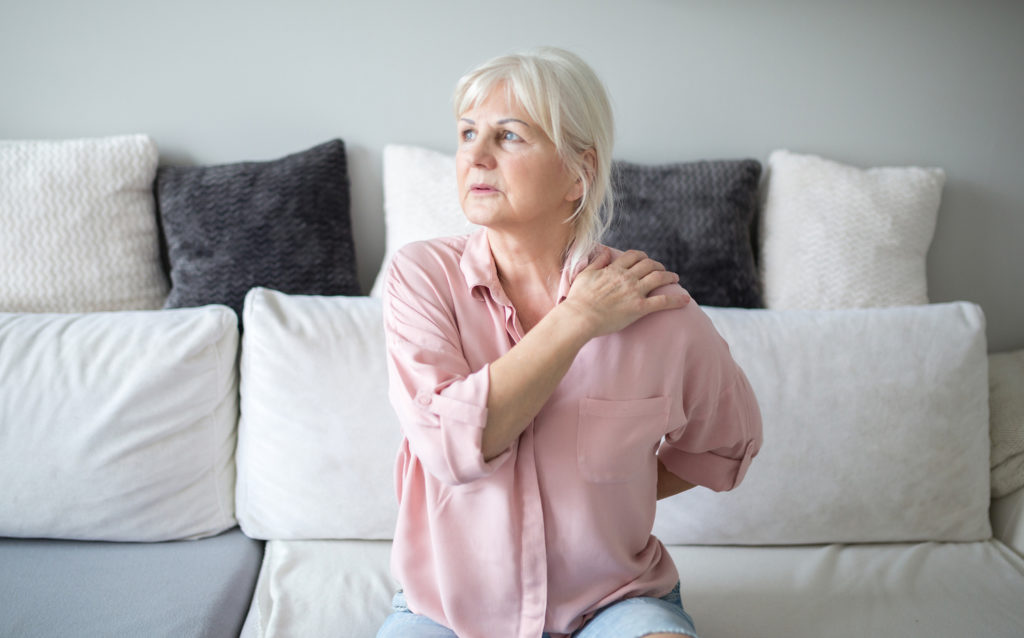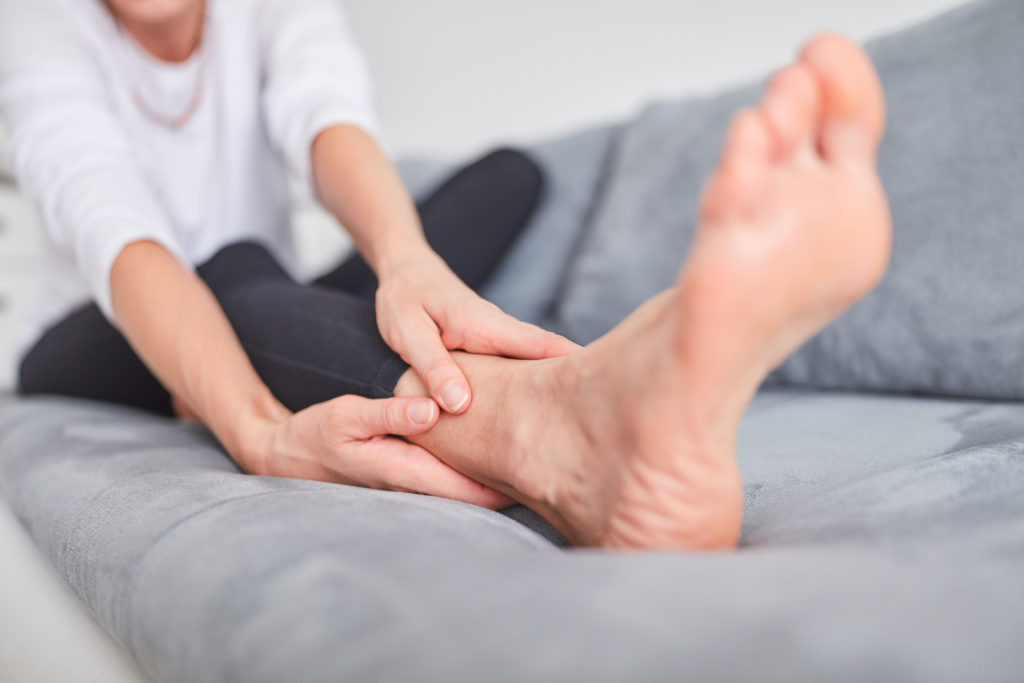Every woman will eventually go through menopause. This transition can come with unwanted side effects, such as joint pain. Many women do not realize that their sudden onset of joint pain was triggered by them going into menopause. In this article, we are going to explore the link between menopause and joint pain.
What Is Menopause?
To understand the connection between joint pain and menopause, you first need to understand what menopause is. This is a natural part of getting older for women. On average, women experience the onset of menopause around age 50. You will know if you have entered menopause once it has been a year without you menstruating.
Menopause occurs in tandem with hormone levels declining in areas such as the reproductive system, nervous system, heart, brain, bones, and skin. One of the most commonly-occurring side effects is pain, especially muscle and joint soreness.
Menopause and joint pain share a connection that affects joints in places like the knees, neck, elbows, and hands. If you had joint injuries when you were younger, these would start to hurt more. Basically, prepare to feel more aches in places you used to, or wherever there are joints.
The reason you feel pain in your joints during menopause is that you are producing less estrogen. This is a key hormone that is very helpful in reducing inflammation. When estrogen levels drop, your chances of experiencing more inflammation increase dramatically.

How to Tell If Joint Pain Is Caused By Menopause
There are a few ways you can glean whether the joint pain you are experiencing is due to menopause.
If you wake up in the morning and feel that you have stiff joints that ease up over the course of the day as you move around, it may be menopause joint soreness. Also, if the areas you feel joint pain are your neck, shoulders, wrists, or elbows, it hints at being related to menopause. The feelings of swollen and stiff joints, as well as a feeling of soreness shooting through part of your body or a burning sensation, can also occur. This is especially true after you work out.
How to Reduce Joint Pain Caused By Menopause
Thankfully, you do not have to be a slave to joint pain when going through menopause. There are many things you can do that will ease your pain and make the process of going through this phase much easier.
1) Exercise Regularly
While you may think that working out is the last thing you should be doing when your joints are aching, it is actually what will help you feel great. There have been a number of studies that have demonstrated this to be true. The key is to find an exercise routine that is of the low-impact variety. This could mean taking up swimming, riding a bike, going for a hike, or doing yoga. All of these can prevent stiff joints.
2) Stop Smoking
Smoking causes inflammation in the body and can put you at risk of bone loss. Your bones will have difficulty healing properly, which can also mean more joint pain in your life. When you quit smoking, you stop making it difficult for your body to repair and take care of itself.
3) Eat Anti-Inflammatory Foods
Incorporate more anti-inflammatory foods into your diet. This can mean eating more blueberries, turmeric, ginger, garlic, and other inflammation-reducing foods. Even delicious dark chocolate can help with reducing inflammation in your body. This leads us to the next point.
4) Have a Healthy Diet
Your diet should be a balanced one, filled with dark leafy greens, foods rich in Omega 3 fatty acids, and plenty of healthy protein, such as fish and chicken. While you’re at it, reduce your intake of citrus fruits, tomatoes, salt, and sugar.
5) Maintain a Healthy Weight
When you have excess weight, your joints have to work harder. This can lead to more considerable pain in areas like the knees. To ease the burden on your joints, and reduce joint pain, drop a few pounds. Even just a few will help reduce the inflammation that comes with menopause and joint pain.
6) Stay Hydrated
You should drink lots of water when going through joint pain and menopause. This will ensure your tissue has plenty of water to keep it supple. When going through menopause, your body will not retain water as well as it did before. This makes it especially important to drink more water and eat foods that are rich in water content, such as watermelons and cucumbers. Ditch the sports drinks, soda, and coffee and drink pure water when possible.

7) Apply Ice
Applying an ice pack to your aching joints can provide temporary relief in a pinch. Even something like a bag of frozen vegetables taken out of the freezer will suffice. However, be careful not to leave it on too long, as not to damage your skin. Use an ice pack for up to 20 minutes on an affected joint to reduce its swelling.
8) Reduce Stress
Stress can be considered the mother of all diseases. Joint pain can flare up in a big way when you experience heightened levels of stress. This is because it increases the level of cortisol in your body, which itself increases inflammation in your body.
9) Take Joint Supplements
Joint supplements can significantly reduce your joint pain brought on by menopause. A popular joint pain supplement made using natural ingredients is JointFuel360. This potent mixture of anti-inflammatory spices like black pepper extract and turmeric, along with antioxidants like resveratrol and ingredients supporting flexible joints, help you live a great life while going through the challenging parts of menopause.
Wrapping Up
Joint pain and menopause no longer need to go hand-in-hand for you. With all the advice we offer in this article about how to reduce your swelling from menopause-induced joint pain. At the very least, you will reduce the uncomfortable joint soreness you have and enjoy life more fully.
